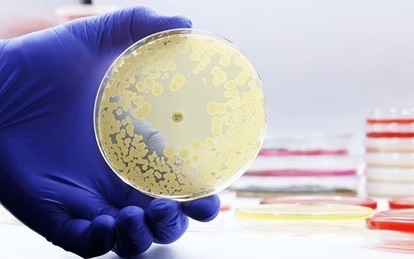Plant Genetic Engineering Modification for Pathogenic Bacteria Resistance
Plant pathogens have always been one of the major enemies of agricultural production, and their severe infestation can cause significant losses in crop production. Generally, plants can mobilize their defense system during pathogen invasion and thus show some resistance. However, under certain circumstances, such as mutation of pathogen physiological species, changes in environmental conditions, and long-term monoculture of crop varieties over a large area, the plant defense mechanism may malfunction so that the pathogen can overcome the role of the plant defense system when it invades the plant, resulting in widespread plant death. Lifeasible can use genetic engineering to help you achieve one of the main goals of breeding, namely, to produce crops that are resistant to pathogenic bacteria.

Bacteria-resistant plant breeding
- Elimination of toxic effects of bacterial toxins. Infestation of tobacco by P. syringae pv. labaci leads to tobacco wildfire disease, whose typical symptom is yellowing due to tabtoxin produced by this pathogen. We can clone the acetyltransferase gene of P. syringae pv. labaci, place it under the control of the CaMV35S promoter, transform tobacco by Agrobacterium-mediated transformation, and obtain transgenic tobacco with varying degrees of resistance to tabtoxin.
- Enhanced synthesis of defense proteins in the plant itself. Thionin is a class of higher plant defense-related proteins consisting of 45-47 amino acids widely found in plant seed endosperm. We can transfer the exogenous thionin gene into the target plant, which enhances the resistance of the transgenic plant to pathogenic bacteria.
In addition to this, we can also help you breed bacteria-resistant plants by introducing target enzymes that are insensitive to bacterial toxins, cleaving bacterial cell walls, and disrupting bacterial cell membranes.
Anti-fungal plant breeding
- Lysis of fungal cell walls. We can help you obtain tobacco with a transglutaminase gene, and we can express both exogenous chitin hydrolase and glucanase in plant cells.
- Interference with fungal protein synthesis. We use inducible promoters to secrete ribosome-inactivating proteins (RIP) into extracellular or vesicles to mitigate cytotoxicity.
- Increased synthesis of defense proteins (expression of exogenous plant antitoxins). Different species of plants produce different antitoxins, and pathogenic bacteria are less tolerant of antitoxins from non-host sources, i.e., poorly de-toxified. Therefore, we will help you to synthesize heterologous antitoxins in plants to achieve antifungal requirements.
- De-toxify the toxic effects of fungal toxins. Some fungi can produce toxins that are toxic to plant cells. We can clone the gene that makes maize resistant to wilt, which encodes an enzyme that destroys toxins produced by wilt fungi.
In addition to bacteria and fungi, plant pathogens include bacteria-like organisms (BLOs) and mycoplasma-like organisms (MLOs), which are highly detrimental to fruit trees and forestry production. Lifeasible can also analyze the molecular biology and pathology of these pathogens and help you to develop strategies for genetically engineering plants to target these pathogens. Please contact us for more information.
For research or industrial raw materials, not for personal medical use!
